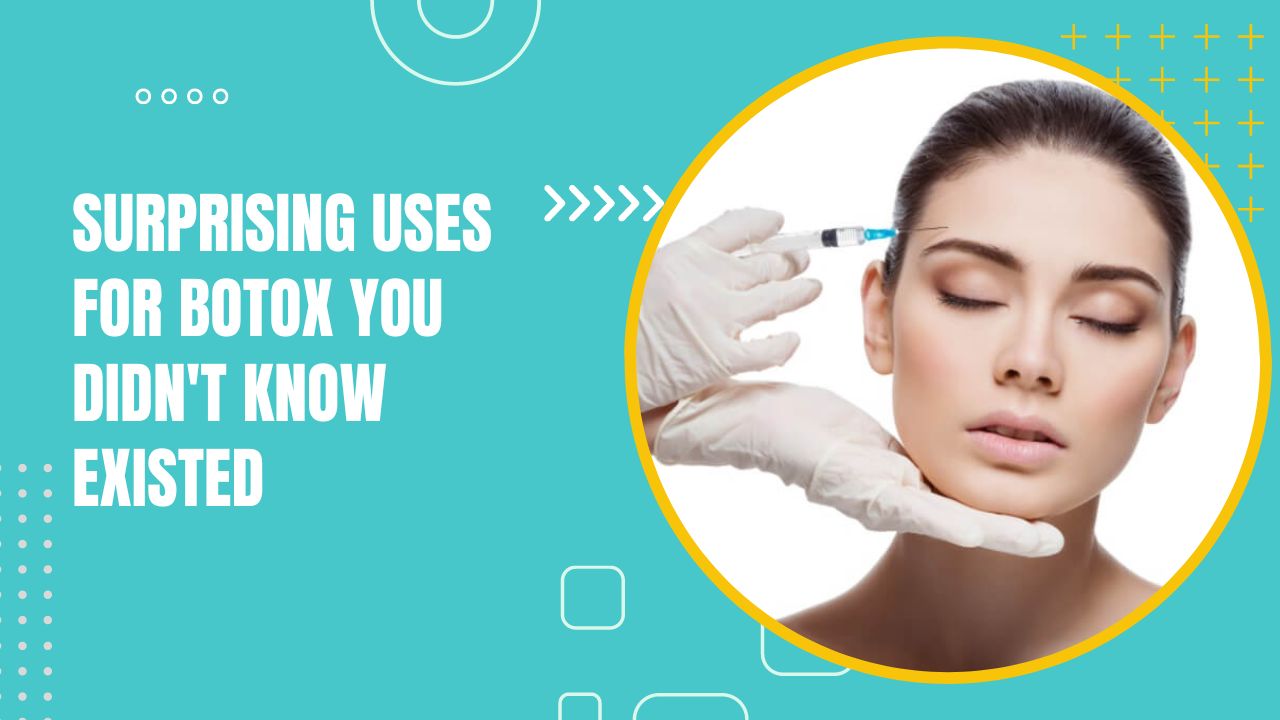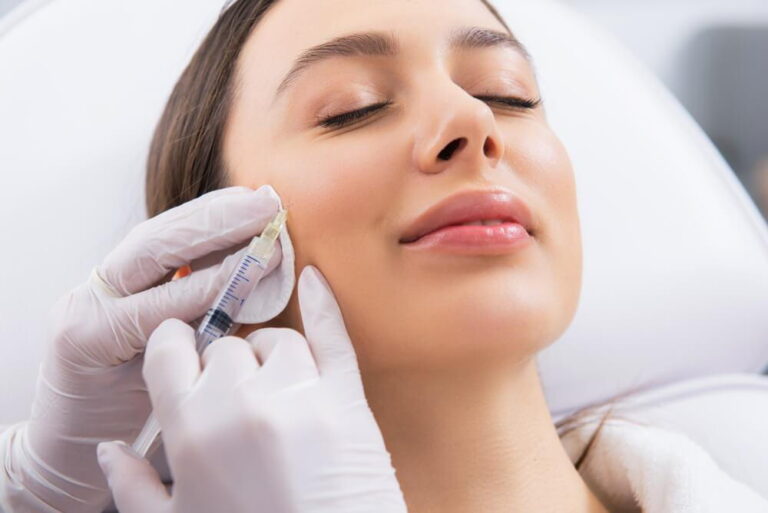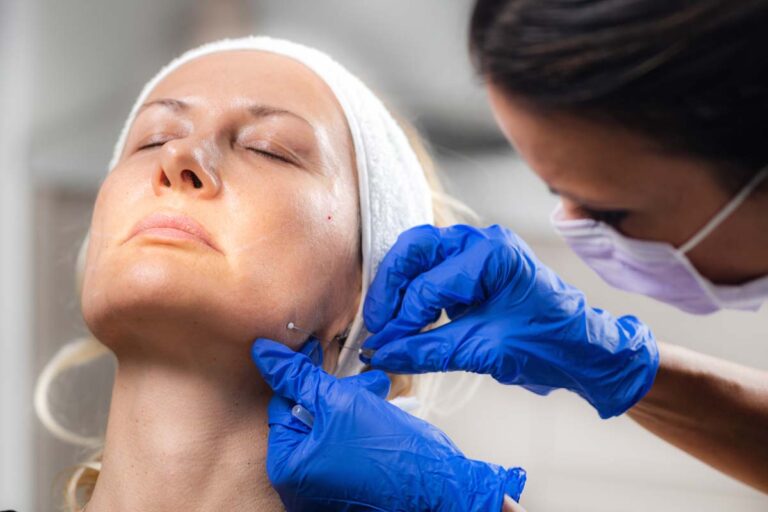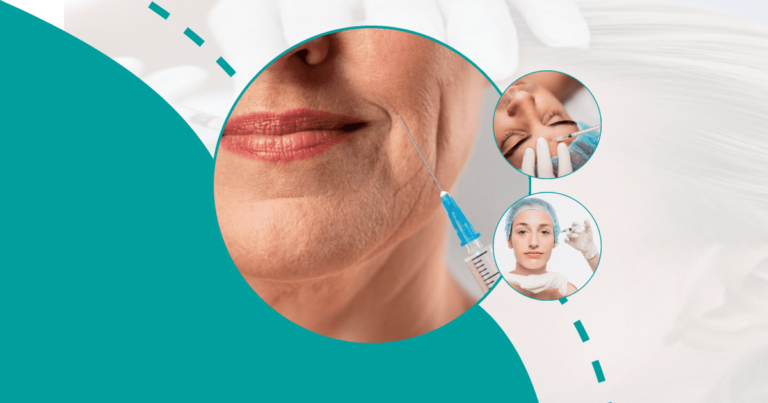Botox, a renowned and prevalent cosmetic treatment, boasts numerous uses beyond its familiar role as a wrinkle-diminishing solution. This article delves into the array of ways Botox can be utilised to tackle various medical conditions, offering relief and enhancing the quality of life for countless individuals.
The bacterium Clostridium botulinum is used to make type A botulinum toxin, which is also known as Botox. It temporarily paralyses muscles by preventing the production of acetylcholine, the neurotransmitter responsible for muscular contractions, when taken in minute quantities. It reduces localised muscle activity, rendering it an efficient remedy for diverse medical conditions.
Therapeutic Applications of Botox
“Botox is a game-changer for countless patients struggling with various medical conditions. Its versatility and effectiveness continue to amaze me as a physician. I’m proud to offer Botox treatments at my clinic, providing life-changing solutions and significantly improving my patient’s quality of life.” – Dr Tarek.
Botox has been used successfully to treat several medical problems, such as chronic migraines, overactive bladder, excessive sweating, muscle stiffness, and persistent pelvic pain.
We will go into more detail about each of these uses in the next sections.
Book A Consultation With Dr Tarek Bayazid
Top-rated Plastic Surgeon For Botox in Dubai
Installment Plan Available
Botox for Chronic Migraine Alleviation
Chronic migraines can significantly compromise an individual’s quality of life, frequently causing incapacitating pain and discomfort. Botox has received approval from the FDA to help treat adults who suffer from chronic migraines and experience headaches for 15 or more days per month.
The treatment consists of multiple injections around the head and neck, administered every 12 weeks. It helps inhibit the release of pain signal-transmitting chemicals, effectively reducing the frequency and intensity of migraines.
Botox for Overactive Bladder Management
OAB is a disorder characterised by frequent, urgent urination that is frequently followed by incontinence. Botox injections can alleviate OAB symptoms by relaxing bladder muscles, thereby increasing capacity and diminishing the urgency to urinate. The treatment is usually administered under local anaesthesia, and its effects can last up to six months.
Botox for Excessive Sweating
Excessive sweating, or hyperhidrosis, can be a distressing issue affecting daily life and self-esteem. Botox injections offer relief by obstructing nerve signals responsible for activating sweat glands. This treatment is particularly effective for axillary hyperhidrosis or excessive underarm sweat, and results can last six months to a year.
Botox for Muscle Spasticity and Movement Disorders
Muscle spasticity is a common sign of several neurological conditions, such as multiple sclerosis, stroke, and cerebral palsy. Botox can help manage spasticity by temporarily paralysing affected muscles, thus reducing stiffness and enhancing mobility. This treatment may assist patients in performing daily activities more easily and is especially helpful for people with upper- and lower-limb spasticity.
In addition to muscle spasticity, Botox has been utilised to address other movement disorders, like cervical dystonia, a condition causing involuntary neck muscle contractions, leading to abnormal head positions and discomfort. By targeting specific muscles responsible for the disorder, Botox can offer significant relief and enhance the patient’s quality of life.
Botox for Chronic Pelvic Pain
Chronic pelvic pain can be a debilitating and intricate issue affecting both men and women. Botox has demonstrated promise in treating specific types of pelvic pain, such as those related to pelvic floor muscle dysfunction. Botox injections can alleviate pain and improve overall functionality by relaxing overactive pelvic floor muscles. This treatment is typically administered under the supervision of a specialised healthcare provider and may necessitate multiple sessions to achieve optimal results.
Benefits of Having Botox:
- Minimally invasive procedure: Unlike surgical treatments, Botox injections are quick, relatively painless, and require little to no downtime.
- Long-lasting results: Botox offers long-lasting results, with the effects typically lasting for 3 to 6 months, depending on the individual and treatment area.
- High success rate: Botox injections are highly successful when administered by a qualified and experienced practitioner, ensuring you achieve the desired results.
- Versatile treatment: As we’ve discussed, Botox has applications beyond cosmetics, making it a useful treatment option for various medical conditions.
- Improved self-confidence: For many people, the cosmetic improvements Botox offers can significantly impact self-confidence and overall well-being.
- Customisable treatment: Botox treatments can be tailored to each individual’s needs, ensuring you receive the desired results.
Conclusion
Botox has been demonstrated to be a helpful treatment for various medical conditions, including persistent migraines, overactive bladder, excessive sweating, muscle stiffness, and chronic pelvic pain, by targeting specific muscles and nerves.
As with any medical therapy, it is vital to speak with a trained healthcare expert to establish if Botox is the best option for your particular needs and to receive proper administration instructions.
Are you tired of living with chronic migraines, overactive bladder, or excessive sweating? Explore transformative beauty solutions with the expertise of our skilled plastic surgeon in Dubai.
Secure your spot today and take the first step towards a happier, healthier life.Request a quotefor Botox treatments at Dr Tarek Bayazid and join the growing number of satisfied patients who have experienced the transformative power of Botox.








